Can Business Be Attracted to City?
30th Street Corridor project depends on attracting and growing businesses. Second in a series.
Century City is where it all starts. At 74 acres, it’s the largest single parcel of industrial land in the 30th Street Corridor. The city and its developers have dusted themselves off and gotten to their feet after the blow of losing Spanish train maker Talgo, which was going to be based in Century City until the Walker administration cancelled the state’s contract for the federal funded high speed rail. The sexy new project is General Capital’s $4 million flex-use building breaking ground this fall—the first of two identical buildings that will be constructed on what is now vacant land at the intersection of Capital Drive and Hopkins Street.
While so much attention is focused on Century City, business elsewhere in the corridor is profitably chugging along. Gary Wenzel, President of Capitol Stampings, located on the southern end of the four mile stretch of development, says the corridor is a great place to do business. “The location is very good. Our trucks have no problem getting in and out of here. I’m seven minutes from downtown Milwaukee. It’s a great city.” He started there in 2005, when the former Steel Tech went into receivership and was bought by the Wendorff Brothers holding company. Wenzel, who has more than 30 years experience in the outdoor power and equipment industry, had spent his career running businesses in the suburbs. But when the Wendorff brothers approached him about taking on Capitol Stampings, he said to himself, “I have a pretty nice job here in the suburbs so I think I’ll go down to the central city and see what I can do.”
The company, which manufactures parts like the pulleys that make the blade in your lawn mower spin around, has been “very profitable,” Wenzel says. An anchor in the corridor’s target district for smaller businesses, Capitol Stampings sits on 11 acres spread over three city blocks between W. Meinecke and North and 27th and 30th Street. Close to his borders are residential housing and a retail strip along North Avenue. His company does traditional manufacturing, “bending iron, bending metal,” and so is not part of the sexy, future focused advanced manufacturing that is the target for development to the north.
Tom Ryan, who’s been running Jonco Industries on Hampton Avenue just east of the corridor for 35 years, says that when he tells people where his building is, the first thing they ask about is the crime. A lifelong Milwaukeean who grew up on the South Side when a worker like him could walk down National Avenue and get a job, and then go out at lunch break, head down the street and find one paying twenty-five cents an hour more, he says he’s always felt safe in his neighborhood. Widely seen as one of the angels of corridor investment (mention his name to anyone involved in the project and the invariable response is, “He’s a great guy”), his most recent contribution is the purchase of the old Eaton Tower building on 27th Street just north of Capital. His first tenants—the Northwest Side CDC, the Uniting Garden Homes neighborhood association, MAXIMUS, a Wisconsin job center and M-WERC, a power, energy and controls business incubator—personify the kind of consortium it’s going to take to make the corridor a success.
The purchase of the Eaton building was both a business decision—Ryan owns almost a million feet of industrial space in and around the corridor and is not in the habit of losing money on it—and a sentimental one. When he worked at A.O. Smith in the 1960s, he watched the building go up and it embodies what he sees as Milwaukee’s birthright and its future: manufacturing innovation. “Every day,” says Ryan, “we use something that was developed in that building” — like power windows and automatic locks. Before it was Eaton, it housed Cutler Hammer; there’s a conference room on the 7th floor named after its former president, Edmund Fitzgerald, one of the original owners of the Milwaukee Brewers (and whose father was the namesake of the ill-fated ship made famous in the Gordon Lightfoot song).
While betting on manufacturing may appear to be a gamble in an age of global economic development, the advanced manufacturing that can’t be done cheaply overseas is a good candidate for Milwaukee—and it’s never completely left. Alan Perlstein, M-WERC’s executive director and former general manager of defense contractor DRS Technologies, located on the northern tip of the corridor, cites M7’s findings that Wisconsin is home to 900 companies in the power, energy and controls industry that employ 100,000 workers and generate $38 billion in revenue. “The largest companies in the world in this area have headquarters in Milwaukee,” says Perlstein.
Not everyone in the area, though, has such a rosy outlook. “Let’s not have any fantasies about what’s going to move in here,” says Art Arnstein, one of three partners of United Milwaukee Scrap who worries that the focus on advanced manufacturing in the corridor might be bypassing potential development. A long time resident and owner of a decidedly un-sexy scrap yard, his relationship with the city is a bit prickly. “Why did it take so long for people to understand the more homes you board up, the less jobs you have, the more crime you have?” He points to Pleasant Prairie, the Kenosha County suburb that attracted the Amazon warehouse and its 1,100 jobs, albeit low skilled ones. Or what about the Start-Up New York initiative that offers business start ups 10 tax-free years for locating their businesses in the manufacturing regions of upstate New York? “If I had a magic wand I would somehow make it so attractive that a company can’t say no,” Arnstein says.
For those who are working to attract those jobs, the city, the state and the federal government have packages of incentives like Tax Incremental Financing (TIF) to offer. Gloria Stearns, head of the Corridor Business Improvement District, says it is a designated TIF zone. The tax burden for companies choosing to locate there starts below the assessed value of the property and then rises incrementally up to and above the future assessed value of the property until the entire tax debt is paid back. It’s works like a tax-financed low-interest loan that reduces up-front costs and gets repaid with interest.
The use of TIF as a financing tool is championed by M7, which sees it as fundamental to developing entrepreneurship— helping existing small businesses grow into larger ones. The group also wants to see southeastern Wisconsin move away from its current practice of intraregional competition that pits cities like Waukesha against cities like Milwaukee in trying to steal businesses from each other. That competition may serve a particular city, but its short-term gain leads to regional economic stagnation.
Lee Menefee of Uniting Garden Homes Inc., a community organization in the corridor, also believes that building small businesses into bigger ones serves the residents of the community. Skills alone, he points out, don’t necessarily lead to long-term sustainable jobs. Someone with high-demand skills in the trades might find work for a year or two on a construction project, but without the ability to develop those skills into a business, that person is going to cycle through periods of unemployment as projects come and go.
Entrepreneurship, adds the M7 report, also builds “place-based development,” in which business evolves not from competing with other parts of the country, but by exploiting resources that are unique to southeastern Wisconsin, like M-WERC’s development of businesses in the power, energy and controls industry that is already a regional strength.
Michael Weiss, partner in General Capital, thinks the city is doing a good job. They’ve taken the lead by preparing the Century City site for development, recruiting businesses locally, nationally and overseas, and by supporting companies like his that want to build in the corridor. General Capital received $3.2 million in city loans which the company matched with an investment of $800,000 to put up the first of two industrial buildings that will break ground this fall. “I like working with the city,” he says. Weiss owns a building and 45 acres on the Northwest Side and is on the Board of the Granville Business Improvement District. From that experience, he says, “I’ve grown to have a lot of faith and belief in the mayor.”
Weiss is confident the leadership involved in redeveloping the corridor is going to give him a positive return on his investment. “Put it this way,” he says. “We expect to make a profit.”
General Capital Project
Corridor of Dreams
-
How to Design a Public Space
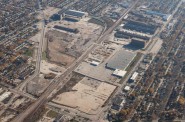 Jun 26th, 2015 by Susan Nusser
Jun 26th, 2015 by Susan Nusser
-
Celebrating the First Homeowner in New Program
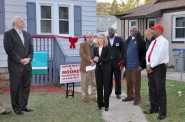 Oct 24th, 2014 by Susan Nusser
Oct 24th, 2014 by Susan Nusser
-
Putting the Pieces Together
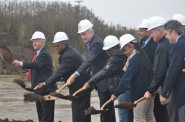 Oct 17th, 2014 by Susan Nusser
Oct 17th, 2014 by Susan Nusser

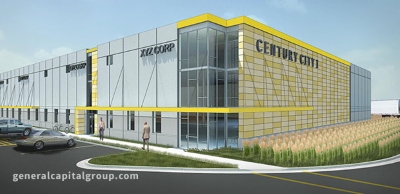
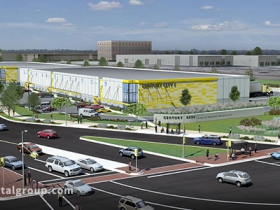
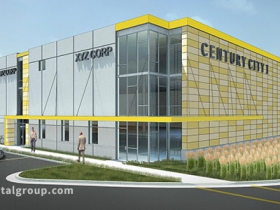


















The acronym for Northwest Side Community Development Corp. is “NWSCDC” not NWCDC.
@Dan. Thanks. I should have caught that one!
No problem. Good article! Willie Smith took all the photos too, so they could be “courtesy of NWSCDC” as well.
And I suppose you realized I was commenting on the wrong article… 😀
@Dan I updated them, but need to clear the cache on those. And yeah I figured that out.